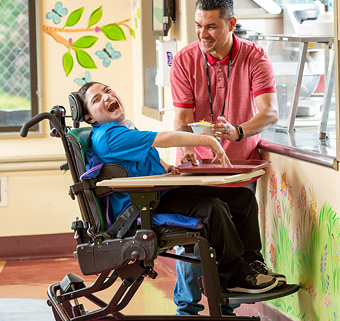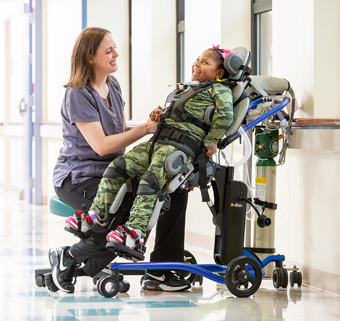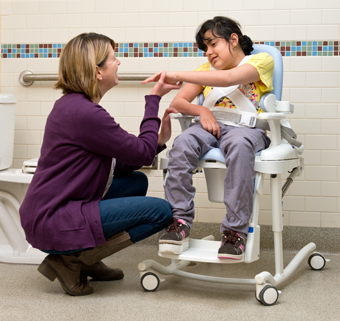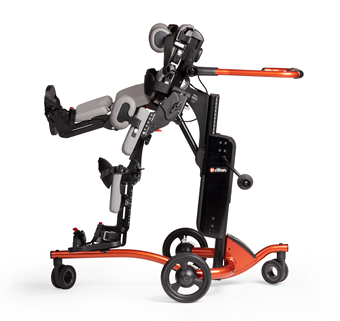Evidence Update: Postural Interventions for Cerebral Palsy – A Systematic Review
| November 2024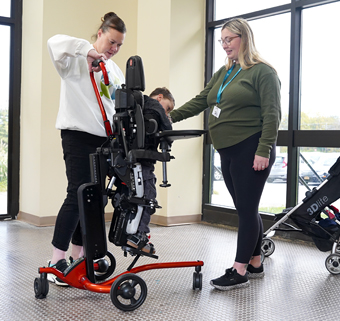 Postural control is the basis for all complex movement, positioning, and function. It involves the subconscious stabilization, alignment, and dynamic adjustment of the body in respect to gravity and the environment to complete a task. People with cerebral palsy experience difficulties with postural control, making participation in routine daily activities challenging and predisposing them to secondary musculoskeletal deformity and complications. However, early research suggests that a holistic approach addressing postural control and alignment is beneficial towards improving the outcome and well-being of individuals with cerebral palsy.
Postural control is the basis for all complex movement, positioning, and function. It involves the subconscious stabilization, alignment, and dynamic adjustment of the body in respect to gravity and the environment to complete a task. People with cerebral palsy experience difficulties with postural control, making participation in routine daily activities challenging and predisposing them to secondary musculoskeletal deformity and complications. However, early research suggests that a holistic approach addressing postural control and alignment is beneficial towards improving the outcome and well-being of individuals with cerebral palsy.
In a recently published article, Effectiveness of Postural Interventions in Cerebral Palsy: Umbrella Systematic Review, researchers describe the evidence base for emerging postural interventions. This article is well worth reading in full, but here is a short summary of the key points.
Proposed Schema for Postural Interventions in Cerebral Palsy (CP)
To better guide postural intervention strategies, the researchers delineate two CP subgroups. Interventions for people with cerebral palsy who are ambulatory and require minimal support (GMFCS Levels I-III) benefit from targeted rehabilitation interventions that address postural control issues in a task-specific, participatory context. Examples of this could be hippotherapy, sit-to-stand practice, or balance training.
On the other hand, individuals with cerebral palsy who are more severely involved (GMFCS Levels IV and V) and require external supports for sitting, standing, and walking, are candidates for a comprehensive 24–hour postural management approach. Postural management recognizes that individuals with debilitating postural tendencies require round-the-clock tailored positioning interventions to prevent musculoskeletal deformities and maintain mobility and function. Postural management programs commonly include seating, standing, and night-time positioning systems alongside physical activity initiatives.
Postural Interventions – A Summary of the Evidence
Improved postural control and alignment result from the synthesis of many interventions. This systematic review identified 41 postural interventions and categorized them into four classifications contributing to overall postural control and management. These are:
- MOVEMENT from postural control interventions
- POSTURE from tone management interventions
- UPRIGHT POSTURE from postural management interventions
- PREVENT DEFORMITY from postural management interventions
The researchers then used the GRADE (Grading of Recommendations, Assessment, Development and Evaluation) and Evidence Alert Traffic Light to determine the quality of the evidence and make the recommendations displayed in the diagram below. The size of the circle equates to the volume of evidence published for the specific intervention and the color of the circle indicates the quality and strength of the recommendation. Here is how it works:
Green light indicates “Go.” There is strong evidence for intervention effectiveness.
Yellow light indicates “Measure.” There is a lack of/minimal evidence or inconclusive evidence for the intervention. A good outcome measure is required to monitor effectiveness. These interventions are also divided by the “worth it line.”
Red light indicates “Stop.” There is strong evidence for the ineffectiveness or harm of the intervention.
This chart is best viewed on a desktop screen.


Take-Aways
Postural interventions can improve quality of life for individuals with cerebral palsy by addressing range of motion, gross motor function, reducing pain and hip migration, and improving gait and balance and ease of caregiving, to name a few.
Overall, it is encouraging to see evidence emerging for the use of seating systems to support upright posture as part of a postural management program for people with more involved cerebral palsy. It is equally important to note that hip surveillance, standing frames, serial casting, and functional hand splints can help prevent deformities in this group.
For those with ambulatory cerebral palsy, hippotherapy seems to be favored for improving postural control, along with balance training, whole body vibration, and sit-to-stand training.
Postural control and postural management require comprehensive team approaches that consider all angles of a person’s well-being. This new systematic review can serve as a guide to professionals engaged in the care of people with cerebral palsy to optimize health and participation.
Reference:
Toohey M, Blatch-Williams R, Budini K, et al. Effectiveness of postural interventions in cerebral palsy: umbrella systematic review. Pediatr Child Health. 2024;34(8):257-78. https://doi.org/10.1016/j.paed.2024.06.003.
